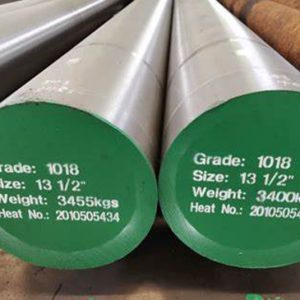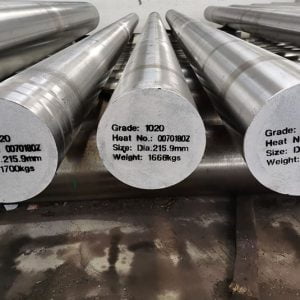Introduction

In the realm of modern manufacturing, high speed steel (HSS) stands as a pivotal material, revolutionizing machining processes across industries. Its remarkable properties have propelled it to the forefront of tooling solutions, enabling enhanced efficiency and precision in manufacturing operations. From automotive to aerospace, and from tool and die making to general machining, the versatility and performance of high speed steel have made it indispensable in the production of critical components and precision parts.
Understanding High Speed Steel
High speed steel (HSS) is a class of tool steels known for their exceptional hardness, wear resistance, and heat resistance even at elevated temperatures. Developed in the early 20th century to address the limitations of carbon steel and high carbon steels, HSS alloys are meticulously engineered to deliver optimum performance in demanding machining applications. These alloys typically consist of iron as the base metal, supplemented with alloying elements such as tungsten, chromium, vanadium, and sometimes cobalt, molybdenum, or other elements. Through precise heat treatment processes involving quenching and tempering, HSS tools attain a fine microstructure that balances hardness with toughness, ensuring prolonged tool life and consistent performance under challenging machining conditions.
Advantages of High Speed Steel
High speed steel offers several advantages over conventional tooling materials such as carbon steel or carbide. Its exceptional hardness, combined with high wear resistance and heat resistance, enables HSS tools to maintain their cutting edge even at high cutting speeds and temperatures. This translates to improved productivity, reduced machining times, and lower production costs. Moreover, the versatility of HSS allows for a wide range of machining applications, from roughing to finishing, across various materials including steel, aluminum, and composites. Unlike carbide, which can be brittle and prone to chipping or fracturing under certain conditions, high speed steel exhibits greater toughness, minimizing tool breakage and downtime. Additionally, the lower cost of HSS compared to carbide makes it an attractive option for manufacturers seeking cost-effective tooling solutions without compromising on performance.
Applications of High Speed Steel
High speed steel finds extensive usage in diverse manufacturing sectors, each benefiting from its unique combination of properties. In the automotive industry, where precision and durability are paramount, HSS tools are indispensable for machining engine components, transmission parts, and chassis components with tight tolerances and high surface finish requirements. Similarly, in the aerospace industry, where safety and reliability are non-negotiable, HSS tools excel in shaping critical aircraft components such as turbine blades, structural elements, and landing gear parts. Furthermore, in tool and die making, where complex geometries and intricate details are commonplace, HSS remains a preferred material for producing cutting tools, dies, and molds used in the fabrication of consumer goods, industrial equipment, and precision components.
High Speed Steel vs. Carbide: A Comparison
| Property | High Speed Steel (HSS) | Carbide |
|---|---|---|
| Hardness | High | Very High |
| Wear Resistance | Good | Excellent |
| Heat Resistance | Moderate | High |
| Toughness | High | Low |
| Cost | Lower | Higher |
| Versatility | High | Limited |
Advancements in High Speed Steel Technology
Recent advancements in metallurgy and manufacturing processes have led to the development of new generations of high speed steel with improved performance characteristics. Through techniques such as powder metallurgy, HSS alloys can be engineered to possess finer grain structures and enhanced properties, resulting in better wear resistance and toughness. Surface coatings, such as titanium nitride (TiN) or titanium carbonitride (TiCN), further enhance the performance of HSS tools by providing additional wear resistance and extending tool life, particularly in high-speed machining applications. Additionally, ongoing research into alloy optimization enables the fine-tuning of HSS compositions to tailor properties such as hardness, toughness, and heat resistance to specific machining requirements, further expanding the capabilities of HSS in modern manufacturing.
Sustainability Considerations

Despite its numerous advantages, the production and use of high speed steel raise sustainability concerns related to resource consumption and environmental impact. Efforts are underway to address these challenges through recycling initiatives, process optimization, and the development of alternative materials with lower environmental footprints. Recycling scrap HSS not only conserves resources but also reduces energy consumption and greenhouse gas emissions associated with primary steel production. Furthermore, advancements in process technologies, such as energy-efficient melting and forging techniques, help minimize the environmental footprint of HSS production while maximizing resource efficiency. Additionally, the development of alternative materials, such as ceramic and cubic boron nitride (CBN) tooling, offers promising alternatives to traditional HSS tools, providing manufacturers with more sustainable tooling options without sacrificing performance or productivity.
Conclusion
High speed steel continues to play a crucial role in modern manufacturing, offering unparalleled performance and versatility in machining operations across various industries. With its exceptional hardness, wear resistance, and toughness, HSS enables manufacturers to achieve higher productivity, lower production costs, and superior quality in their machining processes. Through ongoing research and innovation, the capabilities of high speed steel are continually evolving, driving advancements in productivity, quality, and sustainability in the manufacturing sector. As industries strive to meet the demands of an ever-changing market landscape, high speed steel remains a steadfast ally, empowering manufacturers to push the boundaries of what is possible in precision machining.
FAQ
Q: How does high speed steel compare to other tooling materials like carbide?
A: While carbide offers superior hardness and wear resistance, high speed steel excels in toughness, versatility, and cost-effectiveness, making it a preferred choice for many machining applications.
Q: Can high speed steel be recycled?
A: Yes, high speed steel is recyclable. Scrap HSS can be melted down and reused in the production of new tooling materials, contributing to sustainability efforts within the manufacturing industry.










